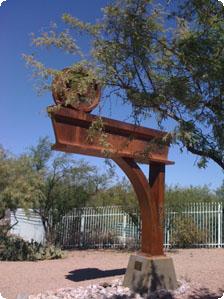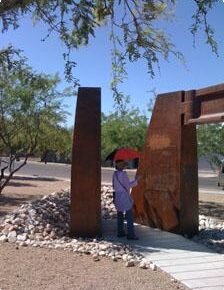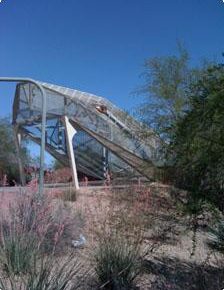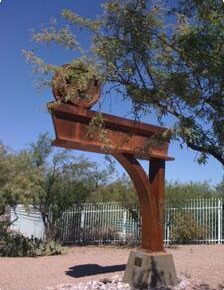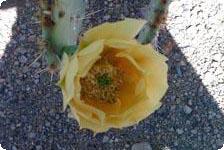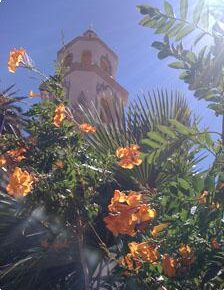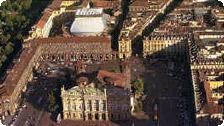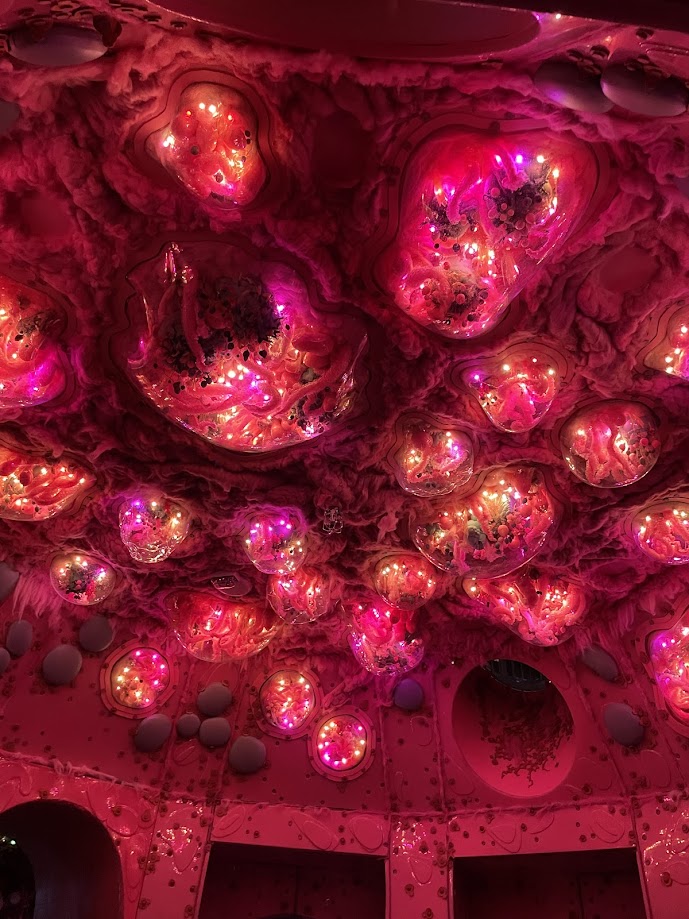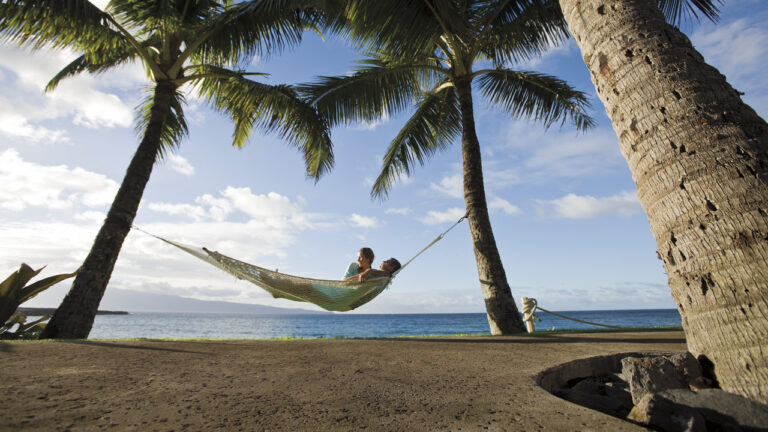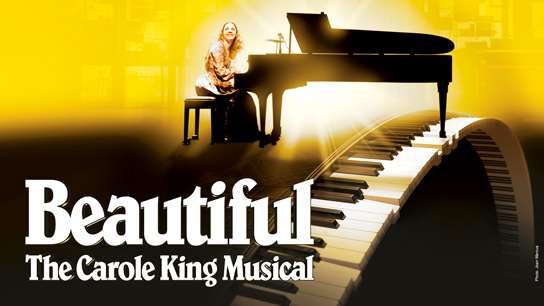Culture: Tucson, AZ: Savoring the Sizzle of the American Southwest
by Alison McFarlane
I’m a desert rat. I love dry heat, hot salsa and icy margaritas. I just spent a sizzling 72-hour summer weekend exploring Tucson, Arizona and all of the above delicacies.
I picked up the scent of deep, rich, dark-roast brew the first morning. Raging Sage, an independent coffee joint, provided the day’s caffeinated jump-start. On a shaded patio packed with sunscreened Tucsonians, I savored their heavenly brew with a fig and apricot scone chock full of morning-picked, sun-ripened fruit in a delicate sugar pastry.
Next was a brisk tour of downtown Tucson to feast my eyes on the sun-baked adobe hues of salmon, ochre, umber and the red tiles of desert architecture. Born a rugged pioneer town, the “Old Pueblo,” was transformed by the arrival of the railroad in 1880. A lingering sensation of historic events, drama and outrageous characters still smolders under layer upon layer of the town’s Native American, conquistador, missionary, military and Wild West influences.
Near Armory Park, I was drawn to the St. Augustine cathedral. Simple and austerely beautiful by design, and lush in its desert-surrounded grounds, the cathedral honors the patron saint of Tucson. Every Sunday morning a mariachi Mass signals devotion and celebration. The cathedral was built in 1896 in Romanesque Revival style, but the facade and towers were rebuilt in the 1920s and given a Spanish Colonial Revival look. Saguaro, yucca and the horned toad trees are silent companions to St. Augustine’s bronze statue.
I was drawn west of downtown to Iron Horse Park, a redeveloped former rail yard with picture-perfect xeriscaping, playgrounds and big, rust-hewn iron sculptures left from rail yard days. A serpentine walking and biking path led me to the spectacle of Rattlesnake Bridge. The pedestrian/bicycle bridge spans a six-lane highway leading into and out of downtown Tucson. Entering the path through the rattlesnake’s mouth, or fangs to be exact, I walked the innards of a not-so-dangerous diamondback rattlesnake. Hmmm … so this was the belly of the desert beast? Constructed of silver metal mesh (the eyes light up at night), the bridge ends with the snake’s enormous tail at a 90-degree angle to the pathway. The bridge is described by Roadside America.com as “abstract enough not to be horrifying.” Hint: walk straight for his tall tail and listen carefully; a mechanized rattle is triggered by motion.
The temperature was mounting toward three digits and it was time to find a slushy citrus margarita or frosty peach iced-tea in the Lost Barrio warehouse district. Tucked just 3/4 mile from downtown, I found refreshment and eye candy in this rejuvenated string of quirky worldly furniture and curio shops. There were cowboy boots, Kachina dolls and Mexican blankets in a few shops – estate furnishings, Chinese antiques, Italian pottery and linens from India in others. Smaller retail shops and bistros were tucked into secret corners. The strand of cavernous warehouse structures provided hours of sun-free browsing in cool shops to satisfy even the most robust quest for Southwestern souvenirs or world-wide timeless treasures.
Downtown and the Lost Barrio districts were holiday-weekend quiet; Saturday afternoon and evening crowds were found in the heart of the University of Arizona neighborhood. Thrift stores meet Urban Outfitters, and tattoo parlors nestle alongside college bookstores and trendy bars. The district’s buzzing street life amplified in direct proportion to the temperature. Co-ed clothing, on the other hand, was discarded with each rising degree.
After my retail neighborhood stroll, I was famished for natural wonders and headed to Tucson’s signature Saguaro Forest in the valley’s western hills. Following signs to Grant’s Pass, the road curves and undulates to an outlook point with sweeping views of the four mountain ranges that hug Tucson tight (Tucson, Santa Catalina, Rincon and Santa Rita).
Saguaro cacti danced across the desert finally bumping into the mountains to the west. In early summer, the stately cacti resemble string-bean-tall men commanded, “Put your hands in the air!” Their blooming flower tops looked like outlaws’ hats jauntily cocked to the sun. It’s possible to hike in and around the forest but, like all outdoor activity in sunny Tucson, the smart time to visit is early morning or dusk.
My final evening in the desert I joined friends at a locals-favorite authentic Mexican restaurant, Teresa’s Mosaic, standing stately on a west hills bluff. As the sun began to set in tones of glowing orange, I considered ordering a second succulent, spicy burro to soak up every drop of jabanero salsa on my oversized platter. With chiles hotter than the sole-searing heat waves off the pavement, tart lime that shifted my mouth from a smile to a puckered kiss and tangy coriander met in a marinade that turned Teresa’s man-sized burros into a sizzling “ay caliente!” entree. Throughout dinner, I was torn between the spectacular Tucson Valley view from the patio and the one across the restaurant where the master chefs (cocineros) were spinning fresh, made-to-order tortillas. After enjoying one (or two – I can’t recall) fresh burros, I ordered a dozen hot-off-the-griddle tortillas “to go” as a gift for friends at home. The next morning as I savored the last of the fresh, mouth-watering corn cakes for breakfast, I decided to instead give my friends a small framed photograph of Tucson’s desert cacti. I never could be trusted to deliver edible mementos.
* * *
Alison McFarlane travels every day. Some days farther from home than others. She keeps a bag packed with three perfect black outfits at the ready for the next amazing adventure. Home is Salt Lake City, but mind and heart make her a citizen of the world. She reads, writes and dreams about globe-trotting experiences.
Discover more from Tango Diva
Subscribe to get the latest posts sent to your email.
